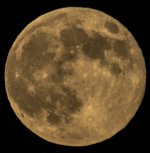donaldjledet
Senior Member
Kodiak, I don't want to keep you up. i know its late over there in Europe.
•
Good! You found it!
Where is my full frame?
•
Salut, hello Hector,
There are no laws, just go starting points! If that one works for you, very well!
As for the brownish colour, a little tweaking at the WB should do it!
BTW, where is that June's full Supermoon???
Have a good day…

No i just check picture control was set at Vivid,jpeg was set atOptimal quality. I shoot at jpeg.So this is an RGB with 8 bits/channel so what is your Picture Control set at? It should be at neutral. Also your jpeg compression should be set for best quality. Are you shooting jpegs originally or NEF and then converting to jpeg? JPEG compression artifacts can look like that because the LUT is being reduced and the color/grey levels are being "squashed" which exaggerates differences in brightness, hence the halo.
View attachment 45803
I think this is the one I eliminated the jpeg noise from the background.
D3100. 300mm, 1/60th sec, f/14, ISO 100.
PS. Should have said this was shot in NEF and artefacts only appeared later when converted to jpeg.
Try lowering the white balance a tad towards the blue side..
I suspect it'll look much better
